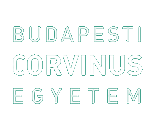Pápay, Boróka Tímea (2021) The Purpose and Types of Organizational Gossip. Doktori (PhD) értekezés, Budapesti Corvinus Egyetem, Szociológia és Kommunikációtudomány Doktori Iskola. DOI https://doi.org/10.14267/phd.2021026
Teljes szöveg
|
PDF : (dissertation)
2MB | |
|
PDF : (draft in English)
747kB | |
|
PDF : (a disszertáció tézisei magyar nyelven)
749kB |
Kivonat, rövid leírás
Gossip, one of the core human activities, enforces cooperation, and influences reputation. It is safe to assume that it is a more complex phenomenon than just having a cooperation-building function. Gossip can be linked to a wide variety of mechanisms that are relevant in small groups such as workplaces. The social structure behind gossip is a complex one where individual motivations; relationships between the sender, the receiver, and the target of the gossip; and organizational norms and contexts also play a role in its formation. The current dissertation conducts a thorough, mixed-method analysis of gossip on multiple analytical levels using novel, unique data sources. The questions of the analysis were the following: What are the motivations of the sender for gossiping? Is there a personal or financially driven envy as an explanation for negative gossip? Is perceived fairness and cooperation influencing gossip dynamics within an organization? Does gossip only circulate between the sender and receiver when they have a trusting relationship? What set of relationships between the sender, receiver, and target facilitate the sharing of gossip? How do these different sets of relationships lead to different social functions of gossip? How do gossip texts look structurally? How are the gossip triad members represented in a gossip speech, and what does that tell us about the gossip's intended purpose? What are the organizational determinants of gossip? How does perceived fairness and cohesiveness contribute to gossip in an organization? In the dissertation, we relied on two main datasets. The primary one was an online survey conducted with employees from multiple organizations, from 9 workgroups operating in different sectors, recording employee opinions and networks. Our second dataset was a unique, spontaneous speech corpus based on about 550 hours of audio recordings captured during a Hungarian entertainment program, transcribed, annotated, and validated by manual transcribers. The analysis uses quantitative methods such as descriptive statistics, probability theory; classification methods such as decision trees, hierarchical clustering; part-of-speech (POS) tagging; and social network analysis methods such as Exponential Random Graph Model or Triadic Relation Models. We also used qualitative methods as semi-structured interviews and gossip speech interpretation.
| Tétel típusa: | Disszertáció (Doktori (PhD) értekezés) |
|---|---|
| Témavezető: | Takács Károly |
| Kulcsszavak: | Gossip, Organizations |
| Tárgy: | Média és kommunikáció Szociológia |
| Azonosító kód: | 1139 |
| Védés dátuma: | 26 május 2021 |
| DOI: | https://doi.org/10.14267/phd.2021026 |
| Elhelyezés dátuma: | 03 May 2021 11:37 |
| Last Modified: | 07 Jun 2021 11:30 |
Csak a repozitórium munkatársainak: tétel módosító lap

 Letöltési statisztika
Letöltési statisztika Letöltési statisztika
Letöltési statisztika